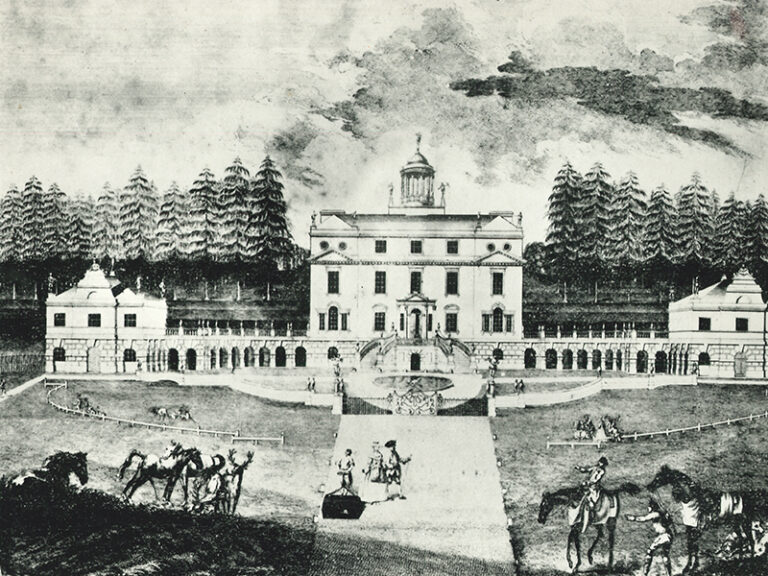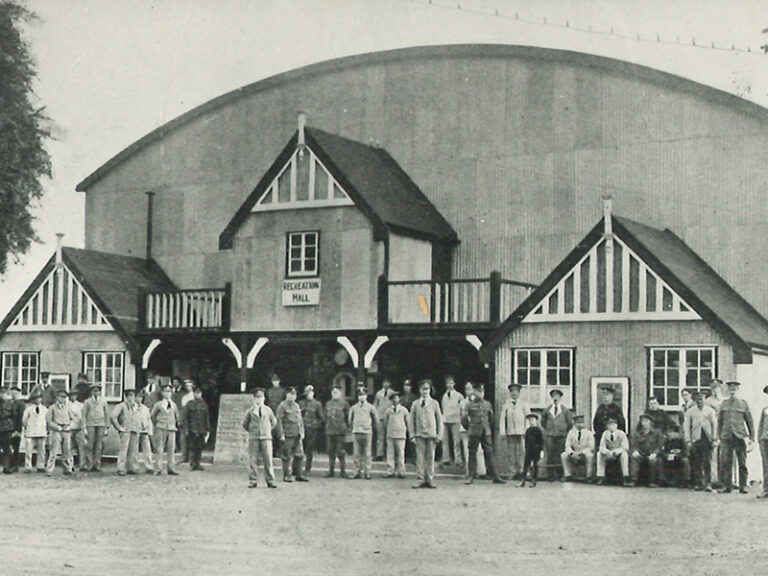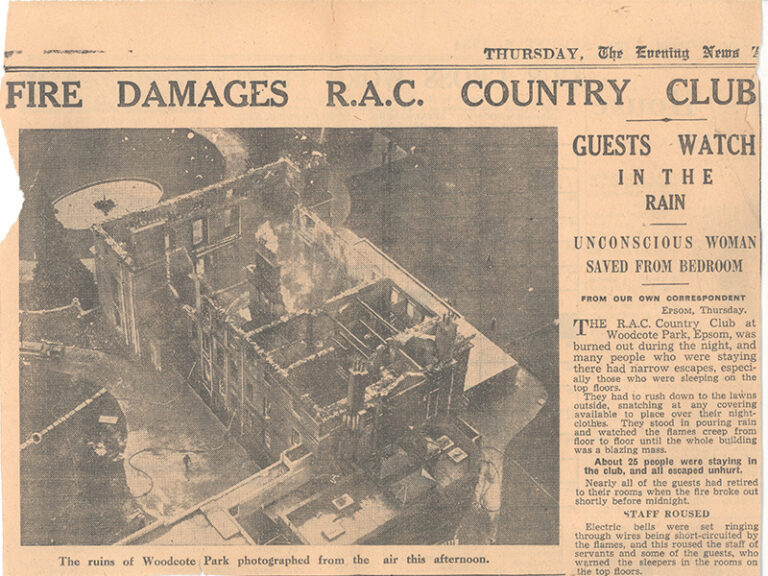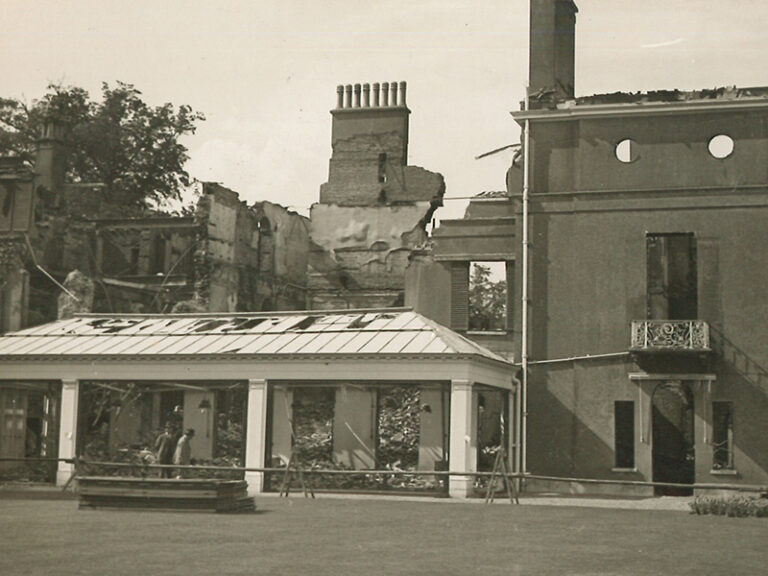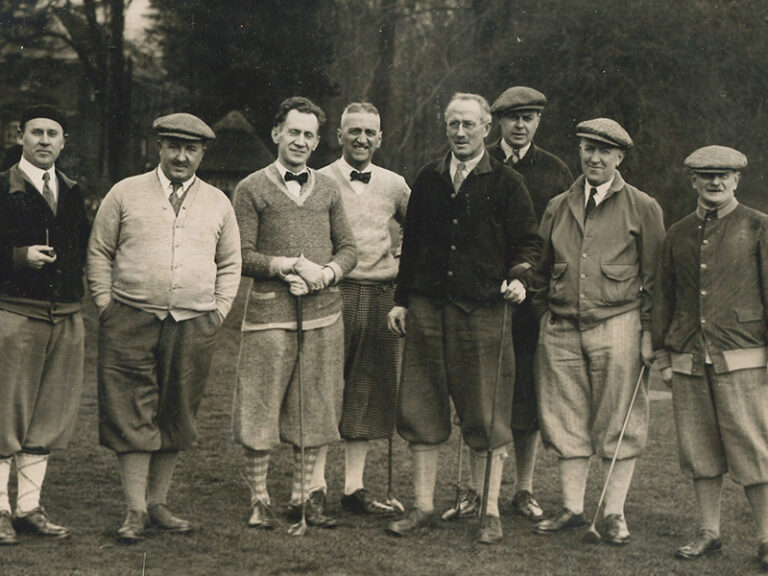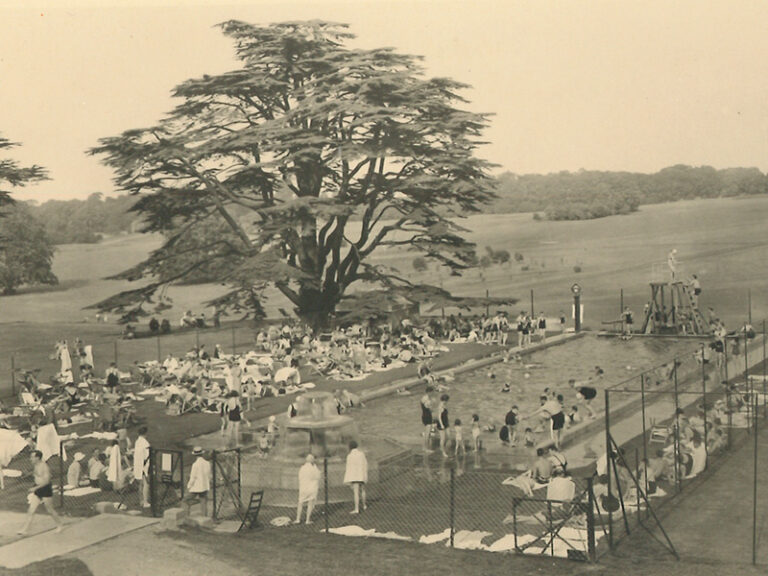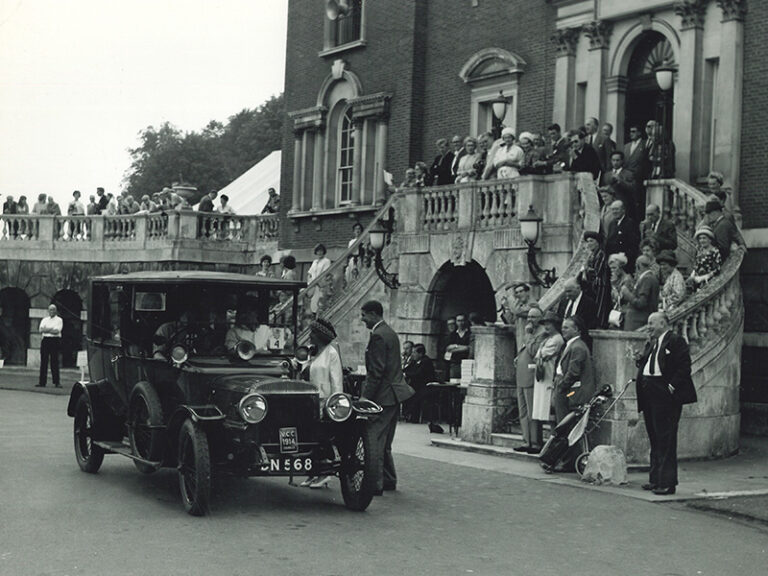History of the Club
Founded in 1897, the history of the Royal Automobile Club is synonymous with the history of the motor car in the United Kingdom. From the outset, the Club espoused the interests of the private motorist, and within a few years became the governing body of motorsport.
Today, Club members can enjoy two wonderful, historic clubhouses and a busy programme of events and activities, many of which are rooted in the Club’s pedigree as the nation’s oldest motoring organisation.
The Club and Motoring
The Club and Motoring
In the late 19th century, Frederick Simms, who had earlier co-founded the Self-Propelled Traffic Association and the Motor Car Club, realised that a new, more open organisation was needed to foster the growth of automobilism across the country.
Consequently, he and Charles Harrington-Moore adopted the constitution of the Automobile Club de France (which was founded in 1895) and together they created the Automobile Club of Great Britain (and Ireland shortly after) (ACGBI). It was formally inaugurated on 8 December 1897.
A year before that, Simms had demonstrated a Cannstatt-built Daimler to the then Prince of Wales at the Imperial Institute in London. That encounter was to ignite His Royal Highness’ life-long passion for the motor car. And in 1907, His Majesty King Edward VII, as he had then become, decreed that the ACGBI should be known henceforth as the ‘Royal Automobile Club’.
The first headquarters of the ACGBI (just four rooms) was at 4 Whitehall Court, London, near to the Houses of Parliament; it remained there until 1902. Then it moved to 119 Piccadilly, and surrounding offices in nearby Down Street. Finally in 1911, its grand, new, purpose-built clubhouse in Pall Mall opened. Then in 1913, the Club also purchased the sizeable estate of Woodcote Park in Epsom as a country club.
The Club’s early achievements on behalf of automobilism were many and various. It put on a major motor show in Richmond in 1899. Then in 1900, Claude Johnson, the Club’s first Secretary (or Chief Executive) organised the groundbreaking Thousand Mile Trial where a large group of drivers travelled the length and breadth of the country to demonstrate to the general public the reliability of the ‘motor car’ (term coined by Simms). And around that time, the Club also campaigned vigorously for increased speed limits and the removal of other restrictive legislation. In 1908, it set up an ‘Associate’ section which included the beneficial ‘Get You Home’ service for the broken-down car. Touring, legal, engineering, and insurance services were all developed in those early years too. And the ACGBI was conducting basic driving tests and issuing driving certificates by 1905, a responsibility that the government only took up thirty or so years later.
Within a few short years of its inauguration, the ACGBI had established itself as the governing body of motorsport in this country with races, hill climbs, trials, and sprints all raising the public profile of the competitive side of motoring. Landmark events came along in the form of the Tourist Trophy in 1905, the longest continuously run motor race in the world; the first ever British Grand Prix staged by the Club in 1926, held at the Brooklands circuit in Surrey; and in 1930 it took over the organisation of the world-famous London to Brighton Veteran Car Run. Held today on the first Sunday of November, it commemorates the original ‘Emancipation Run’ in 1896 when thirty-three pioneering motorists undertook that same journey to celebrate the repeal of the ‘Red Flag Act’ and the requirement that a person walk in front of a vehicle to warn of its advance.
Later, the Club was instrumental in re-igniting motorsport after the Second World War. In 1948, it used Silverstone, a disused airfield in Northamptonshire, for the first post-war British Grand Prix. Two years later, the Club also put on the Grand Prix d’Europe there, the race that launched the start of the ‘modern era’ of Grand Prix racing under FIA regulations.
In 1978, the RAC Motor Sports Association (RACMSA), which had evolved from the Club’s Competitions Committee, was formed to control the business side of motorsport. Today, independent of the Club though with strong links to it still, it is the governing body of motorsport in the country. In 2018, the RACMSA adopted a new name, Motorsport UK.
Towards the end of the last century, the Associate section, with its breakdown and allied services, had expanded exponentially to the point that it was assisting millions of private motorists across the country every year. In 1998-99, the Royal Automobile Club made the major decision of selling that part of the Club, RAC Motoring Services Ltd, to the Lex Group. One useful consequence of this ‘demerger’ was that it enabled the RACMS to access capital markets for long-term growth.
Since that demerger a generation ago, the Royal Automobile Club has reverted back to its historic roots: a ‘private members’ club with the strongest of motoring associations and traditions’. And simultaneously, the re-convening of the Club’s Motoring Committee, which had laid in abeyance for decades, has led today to a thriving programme of motoring events throughout the year.
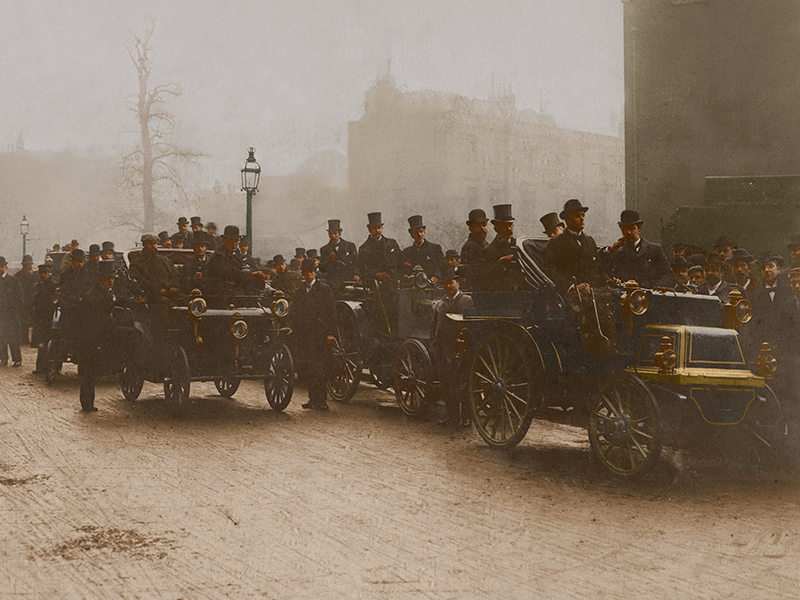
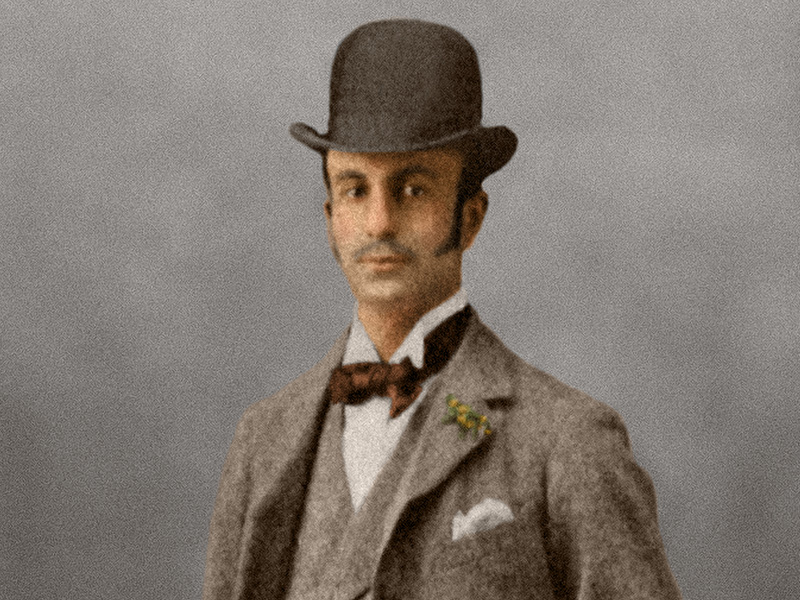
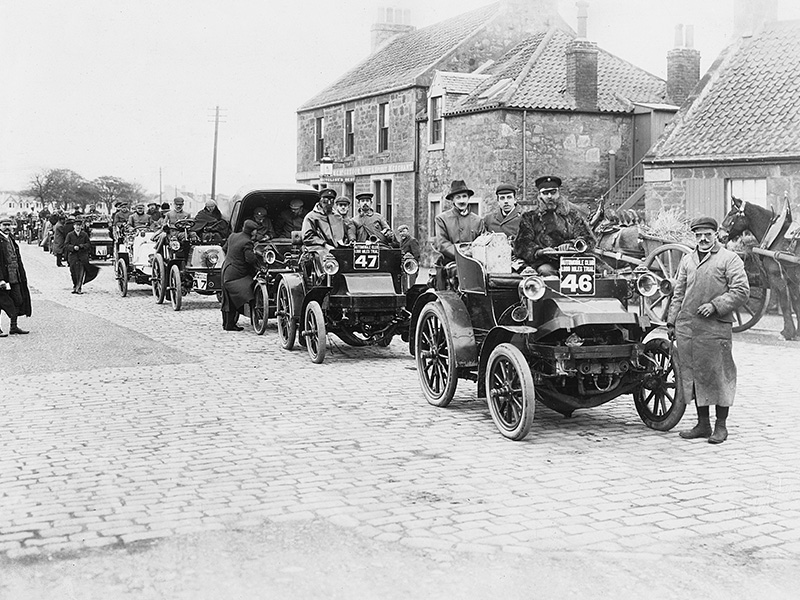
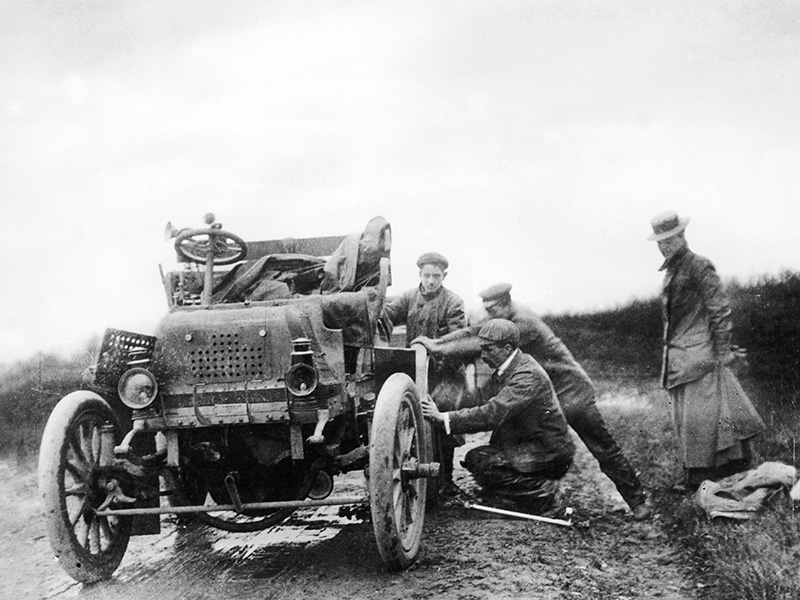
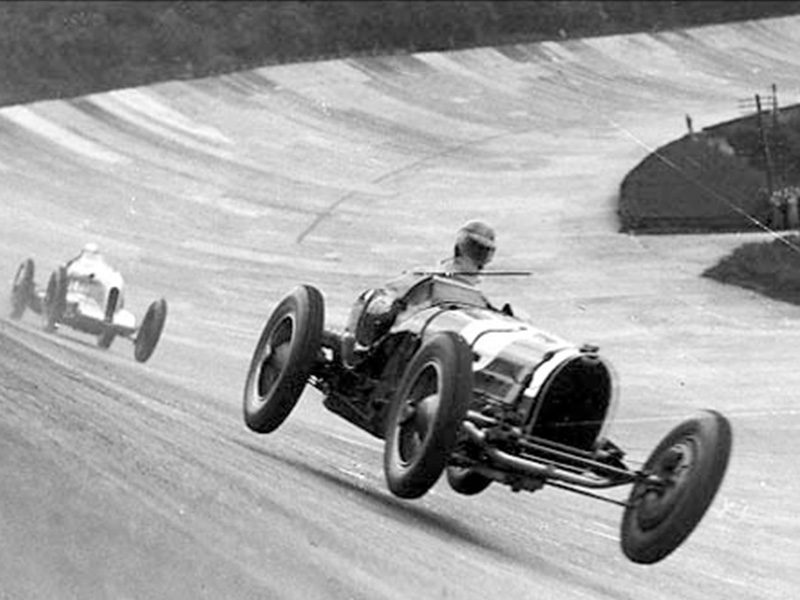
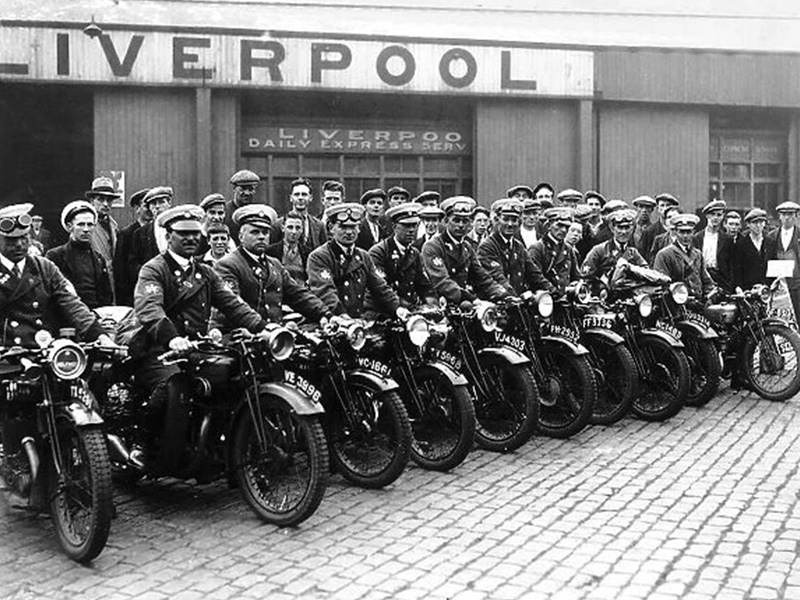
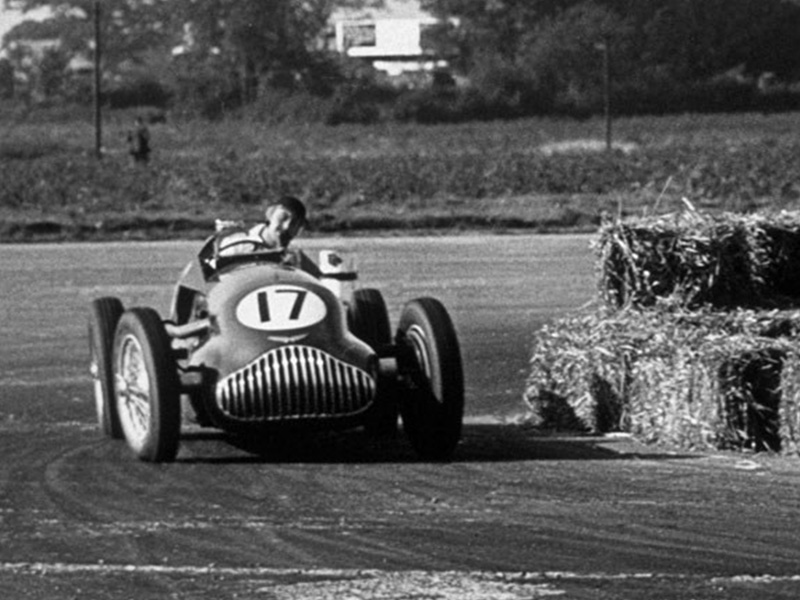
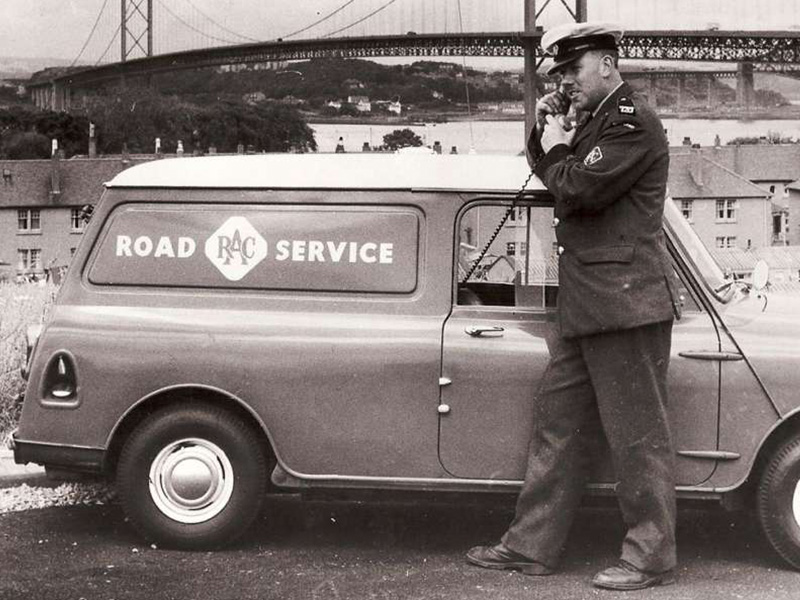
Pall Mall
Pall Mall
With the Club’s membership having risen to some 3,500 members by 1907 and continuing to grow rapidly, the need for much larger premises had become all too apparent.
A grand, ‘state-of-the-art’ clubhouse was therefore considered highly desirable to reflect the Club’s burgeoning reputation too. It commissioned fashionable Edwardian architects Charles Mewès and Arthur Davis to carry out the design. They had already been highly lauded for the recently built Ritz hotels in Paris and London. And they would go on to furnish the interiors of many great ocean-going liners of the period.
An eclectic mix of Classical, French, and English architectural styles characterised the new clubhouse and painstaking detail was lavished on every area, seen and unseen. After three challenging years of construction (1908-10), Club members finally moved into their new abode in March 1911. It had cost what was considered then the huge sum of £330,000 (£250,000 on the building itself and £80,000 on its interiors). Members were very happy with the result though: ‘a mini-palace of opulence and Edwardian hedonism’ was one exuberant description at the time. On opening, its sporting and recreational facilities, including the famous Graeco-Roman styled swimming pool and extensive suite of Turkish baths, were praised particularly.
For both world wars, and to all intents and purposes, the Pall Mall clubhouse became an officers’ club for the Allied armed services. And considering its location, it was comparatively fortunate in the Second World War in sustaining only minor damage from enemy bombing.
The only really major structural change, in the last century or so, has been the addition in 2005 of twenty-two new bedrooms on a completely redesigned fifth floor. Many of the great ‘communal’ rooms have seen a change of purpose over the years, however: the Library is now housed where the Billiards room was originally; the Card room has had two reincarnations and is now the Stewart room; the Associates’ room has morphed into the Segrave Room (where the Motoring Committee meets regularly); while the Great Gallery has kept its name but been converted from a cavernous lounge into a prestigious restaurant.
In recent decades, all of the clubhouse has been extensively refurbished while its scale and grandeur remain widely admired. The addition of many new technologies to enable its smooth operation, as well as a purpose-built business centre, has all contributed greatly to provide a range of facilities befitting the 21st century Club member.
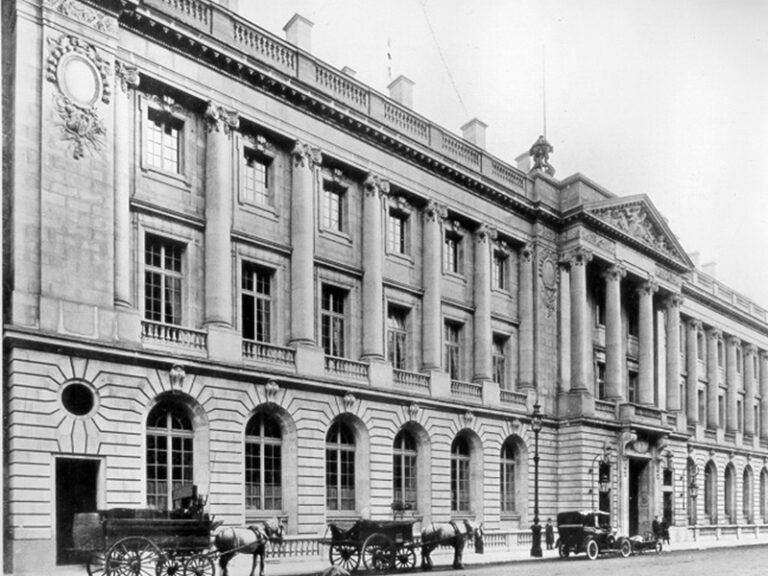
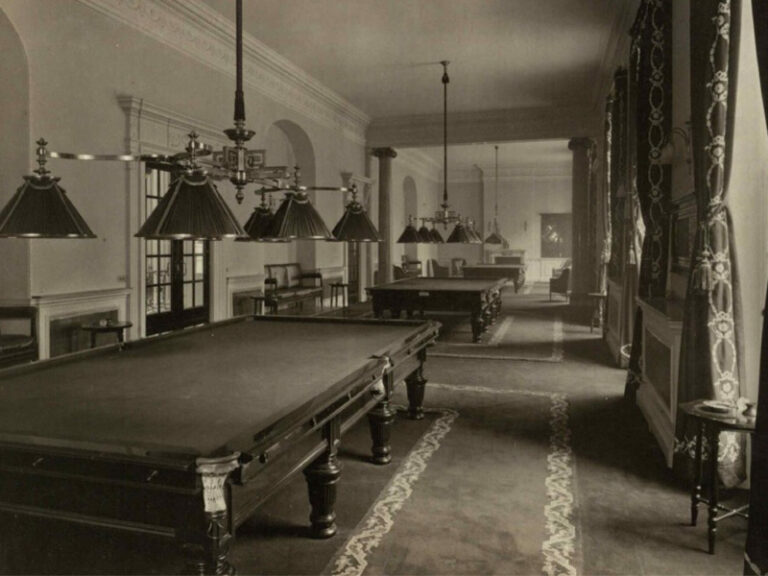
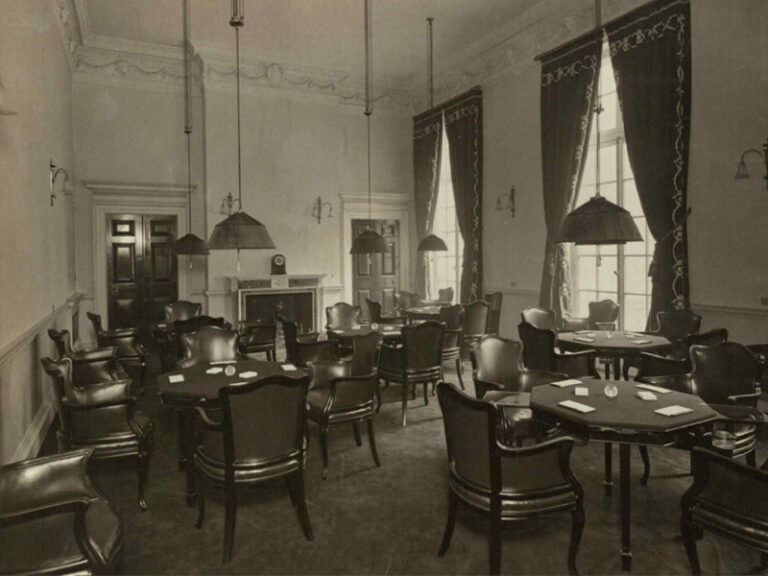
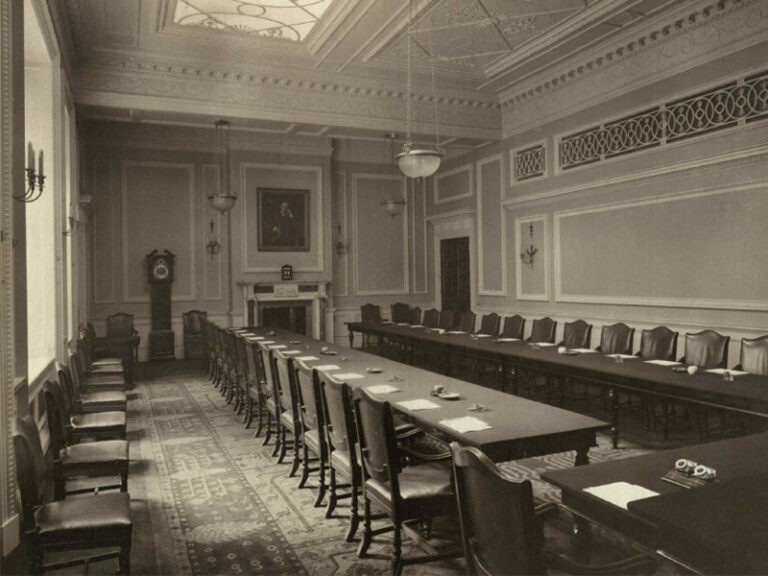
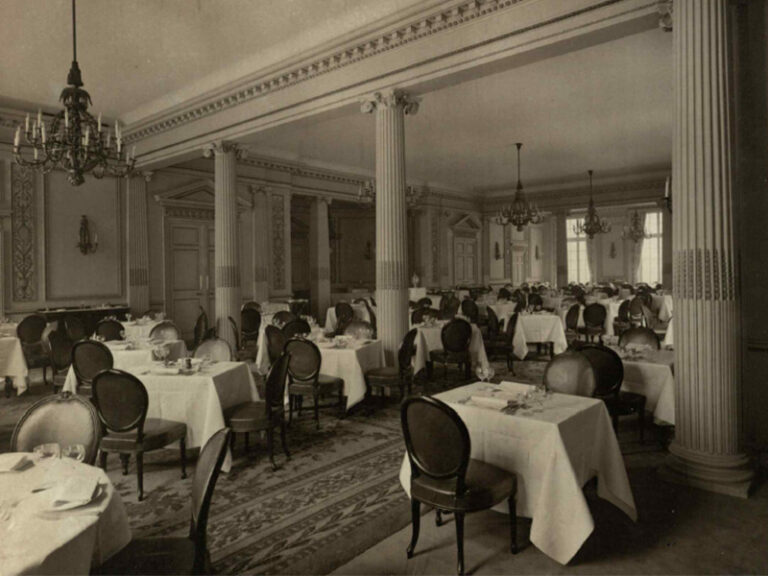

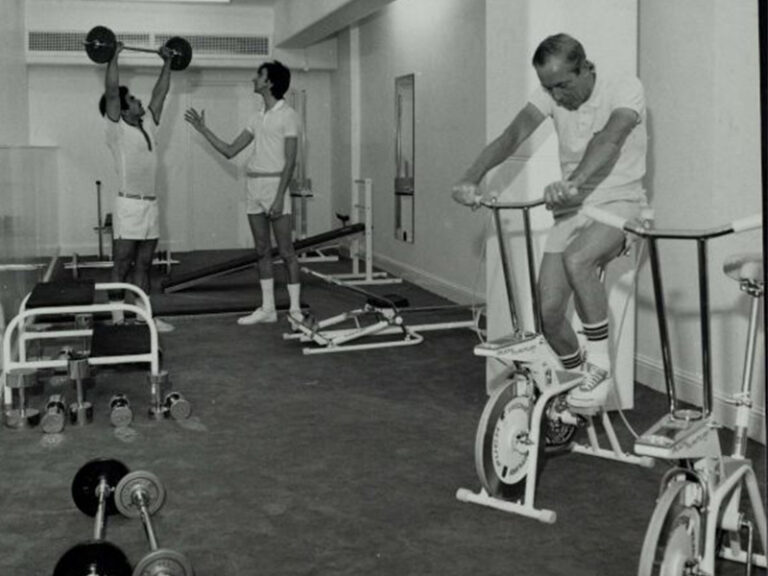
Woodcote Park
Woodcote Park
Woodcote Park is first documented in the Domesday Book of 1086 as part of a much larger estate owned by the Abbey of Chertsey. Centuries later, one notable owner was Richard Evelyn who acquired the estate in 1648 and proceeded to build a fine mansion. Many families have owned Woodcote over the centuries, the final one being the Brooks’ who sold it to the Royal Automobile Club in 1913.
The Club purchased Woodcote Park primarily for members to drive a convenient distance from London to enjoy the fresh air and leisure pursuits. Very soon after its acquisition, the first golf course on the estate opened, designed by the renowned William Herbert Fowler. By 1939, there were two 18-hole golf courses (the Old and the New). Then to commemorate Her Majesty Queen Elizabeth II’s accession, F R Smith’s 9-hole Coronation course came into being in 1953. Today, once again, there are two exceptional 18-hole golf courses to challenge members.
In the First World War, the War Office commandeered a large part of the estate for a military camp. And it was used by the Canadian Army and other Commonwealth countries as a convalescent hospital. In the Second World War, 110 acres of Woodcote Park were ploughed up for food production, which incidentally saw the demise of the New course. During that War, sheep, poultry and bees were also kept and vegetables grown in the Walled Garden (now a leisure centre for Junior members).
In 1934, the clubhouse was tragically gutted by fire. Remarkably, nobody was hurt but little remained of the mansion’s original interior. The Mewès and Davis partnership, responsible for the Club’s Pall Mall clubhouse, were commissioned for the rebuild which opened in 1936. Externally, the clubhouse resembles the old mansion, though in common with Pall Mall it is now a steel-framed structure and highly fire resistant. Inside, it was technically way ahead of its time with filtered, draught-less air conditioning, automatic panel and radiator heating, and mechanical ventilation of the kitchens.
Members today can follow all manner of sporting pursuits, including swimming in an attractive 30-metre pool in the Cedar Sports Centre. Tennis is well catered for with six outdoor, floodlit courts. And additionally, squash and croquet are played too. As well as its 22 finely appointed bedrooms, there is a fine array of dining experiences from the sophisticated Stirling’s restaurant to the relaxed 19th Hole serving light bites. And naturally, the estate acts as a marvellous backdrop to all manner of motoring events. Doubtless, the Committee of the Club who displayed the foresight to purchase Woodcote Park all those years ago would be delighted to see such a wide range of activity.
